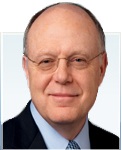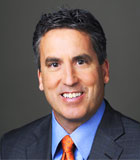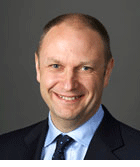 |
| Pfizer CEO Ian Read |
Pfizer CEO Ian Read got a nice pay bump for 2015, with a total package of $23.3 million--more than one-quarter bigger than the previous year's total. But a big chunk of that increase came in the value of his pension. Back that out, and Read's compensation only grew by $280,000.
Read took a $400,000 cut to his cash incentive pay, collecting $3 million rather than the $3.4 million he won for 2013. That was offset by a $700,000-plus increase in stock and option awards, however. And Read's base salary ticked up to $1.815 million from $1.78 million, a $39,000 increase.
 |
| Pfizer innovative pharma chief Geno Germano |
In fact, the Pfizer exec who saw the biggest pay boost overall for 2014 wasn't Read. It was Geno Germano, who's group president of the company's innovative pharma business. Germano's total package took a 40%-plus leap, to $9.56 million from $5.25 million. Like Read, Germano saw pension-value increases account for much of that change. But without that pension bump, Germano's pay still went up by $1.5 million, a 29% increase.
According to Pfizer's proxy statement, Germano won kudos from the board for his group's $13.9 billion in revenue, including a $467 million increase in sales for Eliquis, the clot-buster Pfizer sells with Bristol-Myers ($BMY), and Xeljanz, the company's new rheumatoid arthritis med. Plus, Germano's unit racked up some new approvals and indications--including expanded use of Eliquis--and set up an operation aimed specifically at winning good pricing and reimbursement from payers.
 |
| Pfizer established products chief John Young |
John Young, who heads up Pfizer's established products unit, saw a none-too-shabby pay boost, too. His 2014 compensation amounted to $7.25 million, up from $5.3 million in 2013. And his pension didn't take the same leap as his colleagues' did. His 2014 raise? $1.8 million, or about one-third.
What were Young's bonafides? His unit--which analysts figure could be first to break free from Pfizer in a sale or spinoff--brought in $25.1 billion in sales, with an impressive margin to boot; income before taxes amounted to $16.2 billion. The board also singled out Young's group for herding three of its biosimilar products into Phase III trials--knockoffs of Roche's ($RHHBY) top-selling cancer treatments Herceptin and Rituxan, and J&J ($JNJ) and Merck's ($MRK) rheumatoid arthritis blockbuster Remicade. Plus, the established products business pulled off a sterile injectables coup, via the buyout of InnoPharma.
So far this year, Young's unit has scored a bigger boost, thanks to some dealmaking. Pfizer bought Hospira for $18 billion, in a deal that brings a hefty biosimilars pipeline, including a Remicade biosim that's now on the market in Europe. Hospira's sterile injectables portfolio gives another boost to Pfizer's established products business, too. Perhaps enough of a boost to make a sale or spinoff possible sooner rather than later, analysts said at the time.
But Pfizer isn't done with M&A yet. After last year's failed quest to buy AstraZeneca ($AZN), the company has plenty of cash still on hand to made a sizable buy. At a recent conference, Read mentioned potential sale-and-swaps, a la the GlaxoSmithKline-Novartis-Eli Lilly trades that just closed. Analysts and market-watchers have plenty of their own ideas; on their target lists for a potential Pfizer deal are the likes of Actavis ($ACT), which is in the process of wrapping up its Allergan ($AGN) buy, and the generics specialist Mylan ($MYL).
- check out Pfizer's proxy statement
Special Reports: Top 15 highest-paid biopharma CEOs of 2013 - Ian Read, Pfizer | Top 20 highest-paid biopharma CEOs of 2012 - Ian Read, Pfizer